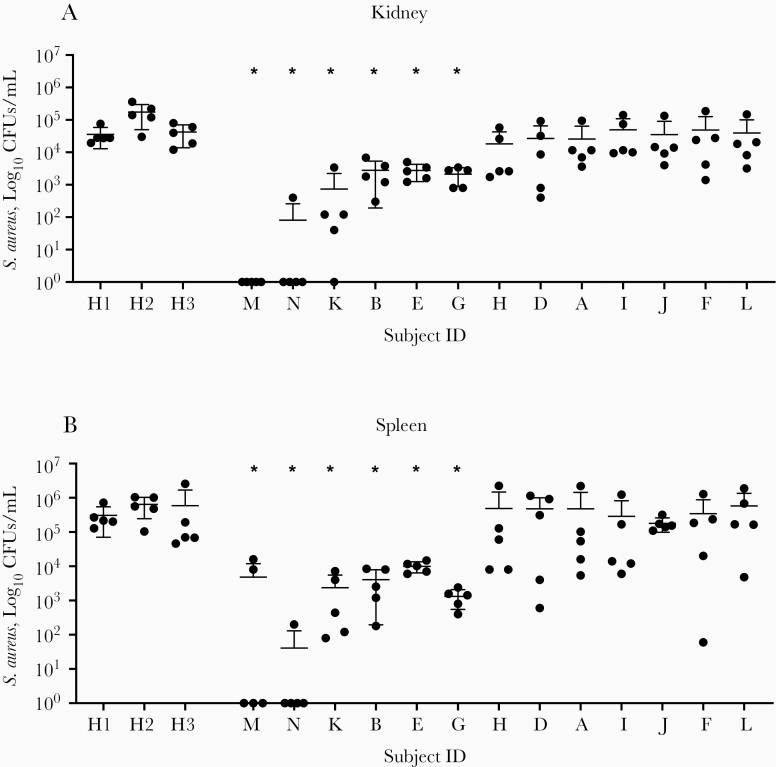Figure 2.
Adoptive transfer of human sera after invasive Staphylococcus aureus infection. Serum samples obtained from pediatric subjects at disease convalescence (4–6 weeks after infection) were adoptively transferred to C57BL/6 mice. In the 13 subjects in whom convalescent serum samples could be obtained, samples from 6 exhibited significant protection from disease, by S. aureus colony-forming units (CFUs) per milliliter in kidney (A) and spleen (B) 24 hours after infection, with serum samples from 2 children (subjects M and N) exhibiting near-complete protection from disease. H1, H2, and H3 represent healthy control subjects with no known history of S. aureus infection. CFUs were enumerated from whole homogenized organ in 1 mL of phosphate-buffered saline.*P < .01 (Wilcoxon rank sum test; n = 5 animals per group). Abbreviation: ID, identifier.

